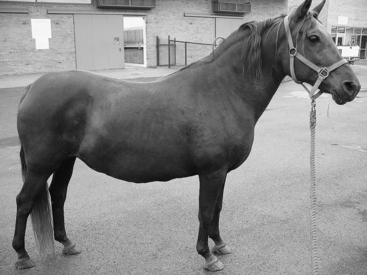CHAPTER 159 Insulin Resistance and Equine Metabolic Syndrome
Insulin resistance (IR) can be broadly defined as a decrease in tissue responses to circulating insulin, which causes a decrease in insulin-mediated glucose uptake into skeletal muscle, adipose, and liver tissues. Causes of IR include reduction in the density of insulin receptors on cell surfaces, malfunction of insulin receptors, defective internal signaling pathways, or interference with the translocation or function of glucose transporter proteins. Compensated IR is the most common glucose and insulin metabolism abnormality identified in horses and ponies. In this situation, serum insulin concentrations are higher than normal because more insulin is secreted from the pancreas to compensate for lower tissue responses.
CLINICAL PRESENTATION
Equine metabolic syndrome is detected most commonly in ponies, Miniature horses, donkeys, and horses of the Morgan, Paso Fino, and Norwegian Fjord breeds. It has also been detected in Arabians, Quarter Horses, Saddlebreds, Tennessee Walking Horses, Thoroughbreds, and Warmbloods. Most horses are from 5 to 15 years of age when laminitis is first detected, but obesity can develop at an earlier age. Founder lines are sometimes present on hoof surfaces, indicating previous episodes of subclinical laminitis. These protruding growth rings are wider at the heel than they are dorsally and are thought to occur when laminitis inhibits dorsal hoof-wall growth. Physical characteristics of EMS include generalized obesity, regional adiposity, or both. Regional adiposity takes the form of a cresty neck in horses, and neck circumference is negatively correlated with insulin sensitivity. Other manifestations of regional adiposity include abnormal adipose tissue deposits close to the tailhead, in the prepuce, or randomly distributed beneath the skin of the trunk region (Figure 159-1).




